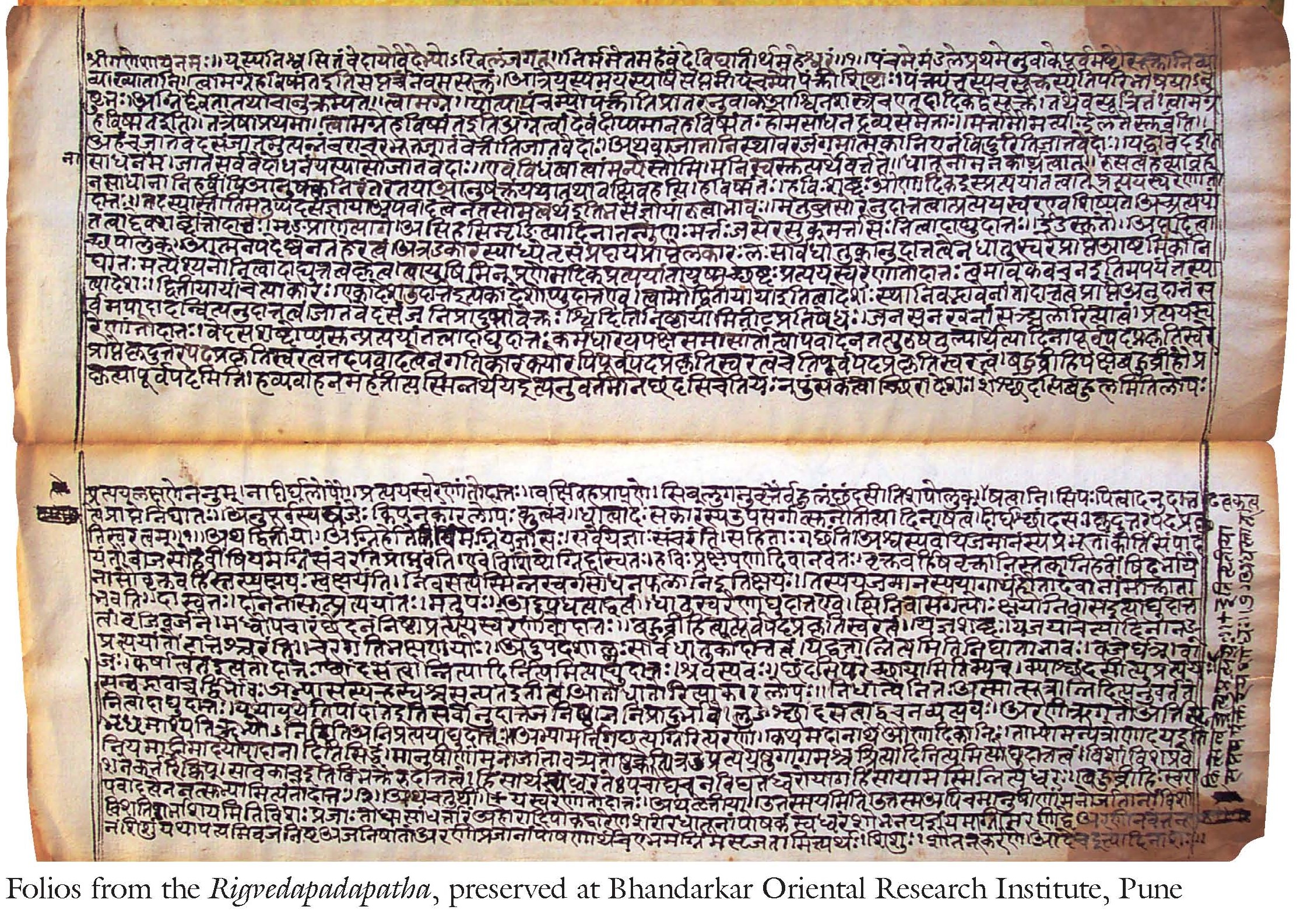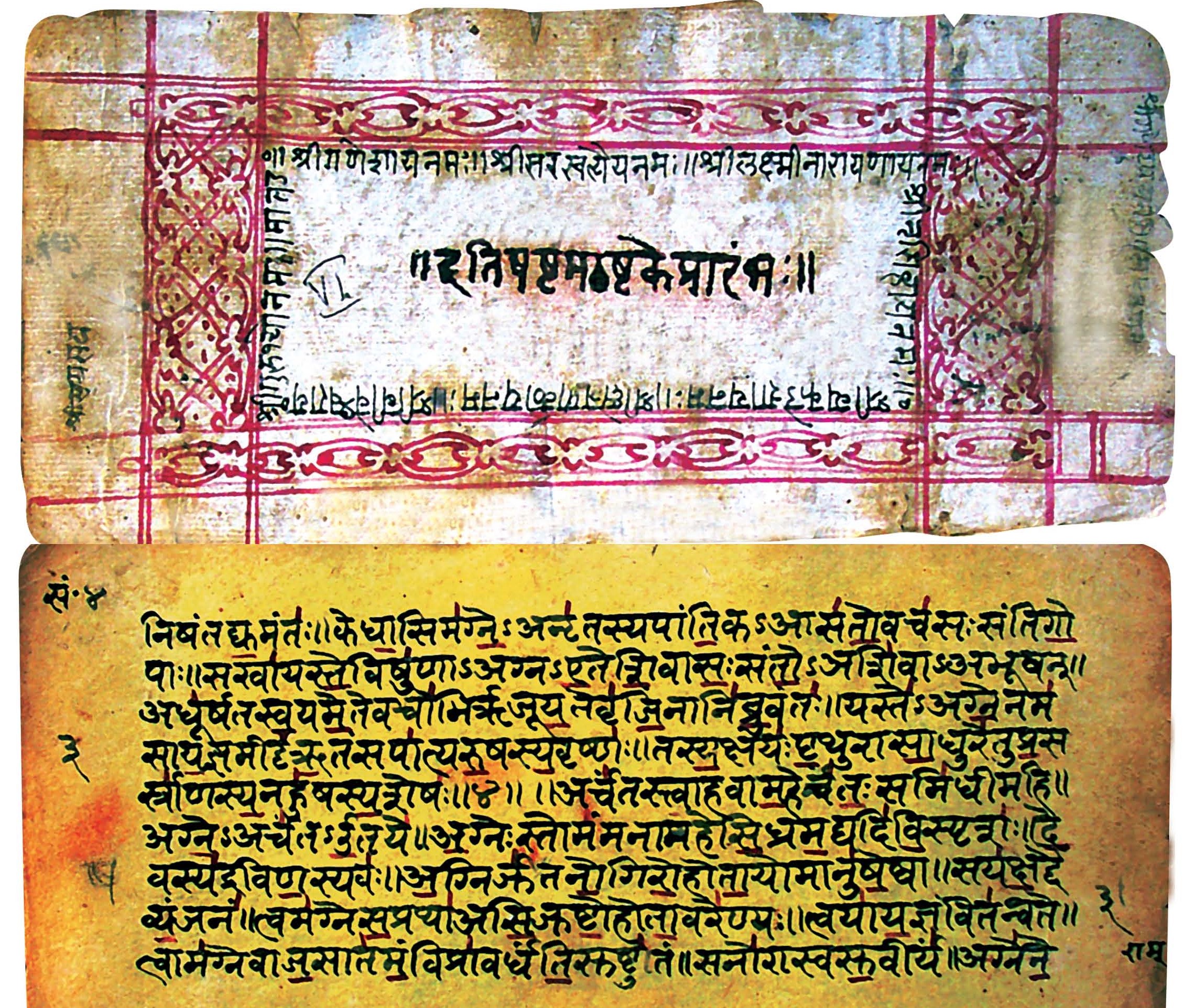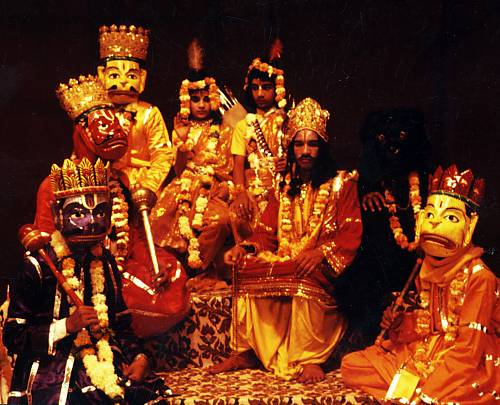- Collection of Rigveda manuscripts at Bhandarkar Oriental Research Institute, Pune

- Gilgit manuscripts at the National Archives of India, New Delhi and the Department of Archaeology, Archives and Museums, Jammu and Kashmir
- The I.A.S. Tamil Medic Manuscript Collection (1997)
- Archives of the Dutch East India Company (2003) - Dutch nomination
- Saiva Manuscripts in Pondicherry (2005)
Manuscripts form an invaluable part of India's documentary heritage. They capture our thoughts, achievements, experience and lessons learnt from history; in other words, they constitute our ‘memory.' The National Mission for Manuscripts has taken the initiative to nominate Indian manuscripts for inclusion in UNESCO's Memory of the World register. Under this programme, UNESCO provides recognition to the most valuable documentary heritage of the world and facilitates its preservation and universal access to it. Moreover, efforts are made to increase awareness of the significance of these records.
The Shaiva manuscripts in Pondicherry were awarded the status of UNESCO's Memory of the World in 2005 in an application jointly submitted by the French Institute of Pondicherry, Centre for Ecole francaise d'Extreme-Oriente (EFEO) and the National Mission for Manuscripts.

The Rig Veda manuscripts from Bhandarkar Oriental Research Institute, Pune, have been nominated for inscription in UNESCO’s “Memory of the World” Register 2007. The programme for the Memory of the World was started in UNESCO fifteen years back to honour significant landmarks in the documentary heritage and record them in its “Memory of the World Register” as world’s inheritance. The Memory of the World programme seeks to guard against collective amnesia, calling upon the preservation of the valuable archival holdings and library collections all over the world, ensuring their wide dissemination. On behalf of the Bhandarkar Oriental Research Institute, Pune, the National Mission for Manuscripts submitted the nomination of the Rigveda manuscripts to the Memory of the World programme.

So far, India has had three other nominations inscribed on the Register
The Vedas are the first literary documents in the history of humankind. Initially passed down through generations down over centuries as oral tradition, this valuable treasure of the ancient world has been preserved in the form of manuscripts in different parts of India.
Out of the total number of 28,000 manuscripts housed at the Bhandarkar Oriental Research Institute, Pune, the 30 manuscripts of the Rigveda form a valuable part of the collection. These manuscripts evince several unique features in terms of scripts, accentuation marks and support material used, among others. Even the pioneering Indologist, Prof. F. Max Müller, has referred to one of these Rigveda manuscripts currently at the Institute. The material in this collection of Rigveda manuscripts was also used to prepare the well known Critical Edition of the Rigveda by the Vaidika Samshodhana Mandala, a premier institute in Pune for Vedic Studies. These manuscripts are of a high value as unique examples of the intellectual and cultural heritage not only of India, but of the world.

The traditional way of reciting the Vedas is known as chanting, since time immemorial this tradition had been passed upon to upcoming generation in oral recitation methods or chanting.
Vedas are the primary source of knowledge also known as Shruti literature. In ancient times Vedas are only recited and not written, it was Adi Shankara who created these scriptures in written format.
UNESCO declared Vedic Chanting a “Heritage of Humanity” , In a meeting of jury members on November 7, 2003, at Paris, Mr. Koichiro Matsuura, Director-General of UNESCO, declared the chanting of Vedas in India an outstanding example of heritage and form of cultural expressions.
UNESCO said about “Tradition of Vedic chanting”
Inscribed in 2008 (3.COM) on the Representative List of the Intangible Cultural Heritage of Humanity (originally proclaimed in 2003). The Vedas comprise a vast corpus of Sanskrit poetry, philosophical dialogue, myth, and ritual incantations developed and composed by Aryans over 3,500 years ago. Regarded by Hindus as the primary source of knowledge and the sacred foundation of their religion, the Vedas embody one of the world’s oldest surviving cultural traditions. The Vedic heritage embraces a multitude of texts and interpretations collected in four Vedas, commonly referred to as “books of knowledge” even though they have been transmitted orally. The Rig Veda is an anthology of sacred hymns; the Sama Veda features musical arrangements of hymns from the Rig Veda and other sources; the Yajur Veda abounds in prayers and sacrificial formulae used by priests; and the Atharna Veda includes incantations and spells. The Vedas also offer insight into the history of Hinduism and the early development of several artistic, scientific and philosophical concepts, such as the concept of zero. Expressed in the Vedic language, which is derived from classical Sanskrit, the verses of the Vedas were traditionally chanted during sacred rituals and recited daily in Vedic communities. The value of this tradition lies not only in the rich content of its oral literature but also in the ingenious techniques employed by the Brahmin priests in preserving the texts intact over thousands of years. To ensure that the sound of each word remains unaltered, practitioners are taught from childhood complex recitation techniques that are based on tonal accents, a unique manner of pronouncing each letter and specific speech combinations. Although the Vedas continue to play an important role in contemporary Indian life, only thirteen of the over one thousand Vedic recitation branches have survived. Moreover, four noted schools – in Maharashtra (central India), Kerala and Karnataka (southern India) and Odisha (eastern India) – are considered under imminent threat.

Ramlila, the traditional performance of the Ramayana
Inscribed in 2008 (3.COM) on the Representative List of the Intangible Cultural Heritage of Humanity (originally proclaimed in 2005)
Ramlila, literally “Rama’s play”, is a performance of then Ramayana epic in a series of scenes that include song, narration, recital and dialogue. It is performed across northern India during the festival of Dussehra, held each year according to the ritual calendar in autumn. The most representative Ramlilas are those of Ayodhya, Ramnagar and Benares, Vrindavan, Almora, Sattna and Madhubani. This staging of the Ramayana is based on the Ramacharitmanas, one of the most popular storytelling forms in the north of the country. This sacred text devoted to the glory of Rama, the hero of the Ramayana, was composed by Tulsidas in the sixteenth century in a form of Hindi in order to make the Sanskrit epic available to all.

The majority of the Ramlilas recount episodes from the Ramacharitmanas through a series of performances lasting ten to twelve days, but some, such as Ramnagar’s, may last an entire month. Festivals are organized in hundreds of settlements, towns and villages during the Dussehra festival season celebrating Rama’s return from exile. Ramlila recalls the battle between Rama and Ravana and consists of a series of dialogues between gods, sages and the faithful. Ramlila’s dramatic force stems from the succession of icons representing the climax of each scene. The audience is invited to sing and take part in the narration. The Ramlila brings the whole population together, without distinction of caste, religion or age. All the villagers participate spontaneously, playing roles or taking part in a variety of related activities, such as mask- and costume making, and preparing make-up, effigies and lights. However, the development of mass media, particularly television soap operas, is leading to a reduction in the audience of the Ramlila plays, which are therefore losing their principal role of bringing people and communities together.


